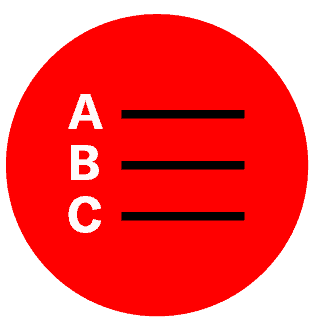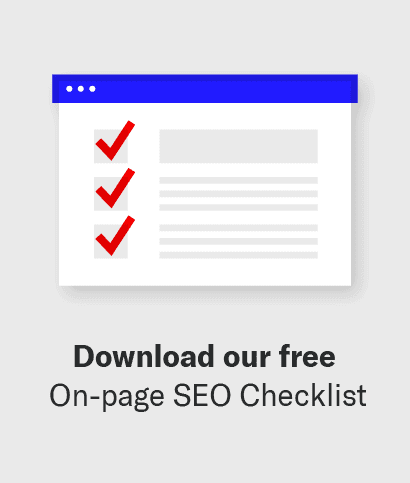“Hey Jude, don’t make it bad / Take a sad song and make it better”
Is this song stuck in your head now? If the answer is yes, I’m not surprised.
“Hey Jude” by The Beatles is one of the most successful songs of all time, partly because once you start singing it, you can’t stop.
And what is it that makes this song catchy? Aside from the dreamy melody and the even-dreamier British accents, it’s the simple lyrics.
They’re short and devoid of excess.
But imagine if the Beatles had written that song the way some of us write today:
“Hey Jude, literally, just try to make it good / Basically, take a super sad song and start making it better”
Doesn’t have the same ring to it, right?
So if we know that concise writing works, why do we fill our posts with so many words?
The Argument for Less Copy
To be fair, I do know why we aim for so many words.
As SEO writers, our focus on concepts like TF:IDF and Latent Semantic Indexing (LSI) means we strive for long form copy. We do this to increase our chances of hitting the right ratio and target keywords.
But to focus on LSI or long form alone is to neglect a world of of other important ranking factors; bounce rate among them. If your readers think your copy is boring, offensive, or untrustworthy, they bounce. If that happens repeatedly, your rankings will suffer. It doesn’t matter how perfect your term frequency is.
So what’s the solution? Less copy.
Anything that’s not relevant to your audience, has been said too many times, bores your readers, or violates the rules of quality copy should should be eliminated. Here’s how to do it:
Understand Your Readers
I’ve talked before about knowing your readers, and that includes knowing what they don’t like reading. Especially when it comes to tone and language, there are stylistic choices you love, but your readers might not. And if that’s the case, you risk them bouncing.
So your job is to figure out what your readers like, then delete everything that they don’t.
This might include:
- Texting language: “LOL” and “BTW,” even if used ironically, are a turn off for some readers.
- Slang phrases: This is anything that warrants an entry on Urban Dictionary — or anything that makes the non-college crowd cringe.
- Directives: Sometimes people dislike being told what to do. So consider carefully before starting any sentence with “you should.”
- Conversational quirks: Readers may not find the likes and ums peppered into your copy charming.
- Profanity: Should marketing copy include profanity? The jury is still out on that one. So use it to your discretion, and know that you could lose readers if you do.
And how do you know which of the above your reader may dislike? It’s a mix of trial and error, educated guesses, and feedback.
You can use Google Analytics (or a similar platform) to determine who’s reading your content. For example, if it’s a younger millennial crowd, texting language might be fine.
You can also search your comments section for feedback and take a look at the engagement you get on, say, a slangy post versus a more proper one.
Don’t Be a Sheep
I get it; you don’t want to reinvent the wheel. But in the competitive world of content creation, that doesn’t roll.
You have to stand out by not doing what everyone else is doing. The fastest way to do that? Delete some stuff.
Scan your content for the statements everyone in your industry is making, then eradicate those statements.
For example, if you’re an SEO, refrain from reminding us that “content is king.”
After you get rid of the industry-specific cliche phrases, get rid of the regular cliches (yep, like “don’t reinvent the wheel”).
Then, get honest with yourself. You know all the words that you hate hearing from everyone else? Words like “literally” and “basically”? You’d be astonished and horrified to find how many of those end up in your own writing. Find them and delete them.
The result? Copy that feels novel and fresh. The kind that readers will stick around to keep reading — and Google likes that.
Don’t Confuse or Annoy Your Readers
There are many articles written on your topic.
If your reader finds your article confusing, time-consuming or boring, they’ll leave to read a different one. This looks bad to Google.
So poise your finger over that delete key; it’s time to eliminate anything that annoys your readers. This includes:
- Copy that doesn’t tie to your point: No tangents needed. The reader doesn’t care.
- Anecdotes (sometimes): Good storytelling is the basis of good copywriting. But not if it’s indulgent, or vague. So make sure that your story is supporting your argument. If it’s not, away it goes.
- Over-explaining: We humans are great at inferring. This is good news, because it means you don’t have to spell everything out. For example, if you told me you picked up milk, you don’t also have to tell me you went to the grocery store. Delete explanations like this from your copy.
- Descriptions of your photos: This is what alt text and captions are for. Don’t dwindle reader attention by using body copy to explain an image.
- Obvious space fillers: Remember being forced as a child to write a card to some relative you’ve never met? You just wrote something to fill the space and be done. It was helpful then, but be sure you haven’t transferred that “skill” to your copywriting now. For example, don’t start an article on how to grow a rose garden with “roses are a popular flower.” We know.
Get Back to the Basics
I know this feels like high school English all over again, but I have some news for you. If your teacher crossed it out back then, it doesn’t belong in your copy now.
Here are a few detention-worthy offenses to avoid:
- Exaggeration words: They’re a really, very, extremely bad waste of your reader’s time.
- Excess punctuation: Sprinkling exclamation marks like confetti is no longer en-vogue.
- Wasteful words: “Top Ten Best Movies of the Summer” can just be “Ten Best Movies of the Summer.” One word trimmed, one millisecond of a reader’s time saved.
- Unnecessary “ings”: A lot of content writers have a penchant for “ing” words, especially when paired with “start.” But why “start saving 50 dollars each month,” when you can just “save 50 dollars each month”?
- Indiscriminate dashes and spaces: Besides slowing down the pacing of your piece, unnecessary spaces and dashes look outdated (or are just plain incorrect). Examples: heart-warming and bed time.
Keeping readers interested in your copy is hard, but it’s also important. If readers are bouncing within seconds of clicking your page, it may reflect poorly in your rankings.
Luckily, preventing this isn’t difficult. Just find every word and phrase that doesn’t belong and get rid of it.
To make that easier for you, we’ve created a checklist with all the types of words and phrases to remove from your copy. Use it next time you’re editing.
“Then,” as The Beatles say, “you can start to make it better.”











